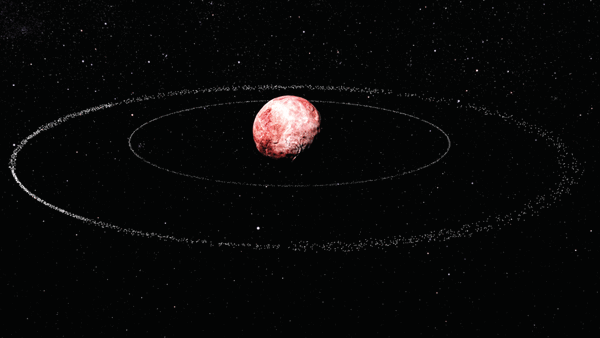

Earlier this year, astronomers announced that a tiny world beyond Neptune with a diameter about one-third that of Earth’s moon possessed a Saturn-like ring that should not be there. It now turns out that there are two such “impossible” rings.
“It was a big surprise,” said Chrystian Luciano Pereira, a doctoral student at the National Observatory in Brazil who led the observations of the world, known as Quaoar. “This implies that Quaoar is a more complex system than we initially thought.”
The new ring, about 6 miles wide, encircles Quaoar at a distance of about 1,500 miles. The discovery was published recently in the journal Astronomy & Astrophysics Letters.
Scientists still do not fully understand how dust and gas in the early solar system coalesced into moons and planets.
Like the first ring around Quaoar, announced by a team of astronomers in February, the second ring lies beyond what is known as the Roche limit. Material orbiting closer than this distance tends to be pulled apart by tidal forces. Thus, a ring within the Roche limit would tend to remain a ring, while a ring of debris outside the Roche limit would usually coalesce into a moon.
For Quaoar, the Roche limit is calculated to be 1,100 miles. The second ring, at a distance of 1,500 miles from the centre of Quaoar, is closer than the ring announced in February, which has a radius of about 2,500 miles.
Quaoar (pronounced KWA-wahr) orbits the sun in the Kuiper belt, a region of frozen debris beyond Neptune that includes Pluto.
The ring is not visible in telescope images. Rather, astronomers found it indirectly, when distant stars happened to pass behind Quaoar, blocking the starlight. From 2018 to 2021, Quaoar passed in front of four stars, and astronomers were able to observe the shadow of the eclipses, also known as stellar occultations.
They also observed some dimming of the starlight before and after the star blinked out, which pointed to the first ring’s existence. Another occultation occurred on Aug. 9 last year, and astronomers again pointed telescopes at Quaoar in hopes of learning more about the ring. The new observations revealed a dense, narrow core in the ring just a few miles wide, surrounded by an envelope of material that is more dispersed. — KENNETH CHANG / NYT
Oman Observer is now on the WhatsApp channel. Click here


